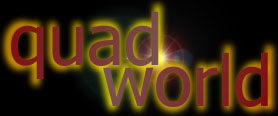 |
 |
 |
 |
 valve
codes... valve
codes... |
below is an explanation of the code names for valves used in Quad equipment. I know it doesn't make very interesting reading (!) but I thought it could be useful to those carrying-out Quad modifications...
| Mullard
valves (Quad 22 control, Quad II, AM2)
These codes consist of a string of letters, followed by a string of digits - e.g. EF86, GZ32... |
| the first letter gives the heater rating: | |
| A | 4V |
| C | 200mA series connection |
| D | 1.4V (normally directly heated) |
| E | 6.3V (the most common) |
| G | 5V |
| H | 150mA series connection |
| K | 2V |
| O | cold cathode/semiconductor device |
| P | 300mA series connection |
| U | 100mA series connection |
| the other letters (listed alphabetically) give the type of device: | |
| A | signal diode |
| AA | 2 diodes with separate cathode |
| B | double diode with common cathode |
| C | signal triode |
| D | power triode (e.g. TV shunt stabiliser) |
| E | signal tetrode |
| F | signal pentode |
| H | hexode/heptode (hexode structure) |
| K | heptode or octode (octode structure) |
| L | output tetrode, beam tetrode, or pentode |
| M | magic eye (seeing eye) tuning indicator |
| N | gas-filled triode/thyratron |
| Q | nonode |
| X | gas-filled full-wave rectifier/double diode |
| Y | half wave rectifier/single diode |
| Z | vacuum full-wave rectifier/double diode |
| the first number indicates the base/pin design and then subsequent numbers are just arbitary, distiguishing valves that would otherwise have identical codes: | |
| 0/1 | misc base/P base/side contact etc... |
| 2 | B8B loctal |
| 3 | international octal |
| 4 | B8A |
| 5 | B9G/ B9D/misc etc... |
| 6/7 | subminiatures |
| 8 | B9A |
| 9 | B7G |
| ...so
as an example, the properties of a Mullard GZ32:
5v heater rating, vacuum full-wave rectifier/double diode, international octal layout. |
| GEC
valves (Quad II)
These codes consist of a string of letters followed by a string of digits - e.g. KT66. The digits are arbitary, simply to distinguish similar valves, and therefore cannot be decoded... |
| The letters have the following meaning: | |
| A | industrial valve (almost anything - power triode etc...) |
| B | double triode |
| D | diode |
| GU | gas-filled rectifier |
| GT | gas triode (thyratron) |
| H | signal triode (high impedance) |
| KT | kinkless tetrode (beam tetrode) |
| L | signal triode (low impedance) |
| MU | indirectly heated rectifier |
| N | output pentode |
| P | output triode |
| QP | quiescent push-pull double pentode |
| S | tetrode (screen grid valve) |
| U | rectifier |
| VS | variable mu tetrode |
| W | variable mu pentode |
| X | triode hexode, heptode, octode, frequency changer |
| Y | tuning indicator |
| Z | HF pentode |
|
...so, a GEC KT66: is a kinkless or beam tetrode. |
| Brimar
valves (FM1)
Brimar (British made, american range) valves mostly use American notation... |
| The first digit indicates the approximate heater voltage - eg 6BA6, 6L6 have 6.3v heaters and 50L6 has a 50v series heater, also 7 as the first digit indicates a loctal valve with 6.3v heater |
| The letters (one or two) indicate the type of valve. There is no general rule except that letters towards the end of the alphabet - eg U, V, W, X usually indicate mains rectifiers, and S as the first letter indicates a single ended valve eg 6SK7 |
| The last digit indicates the approximate number of electrodes, usually counting the heater as an electrode - eg 6AL5 is a double diode with two cathodes, and 6C4 is a triode. No distinction is made between output pentodes and tetrodes - eg 6F6 is a pentode, and 6V6 is a tetrode |
| Many thanks to Martin Ackroyd for the above Brimar valve code info |